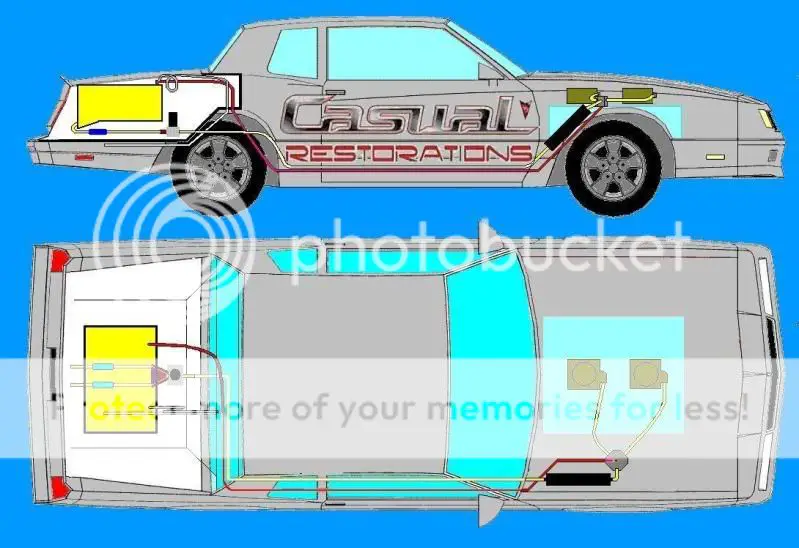There are a few post going on about aftermarket fuel systems.
So far I have feed the engine to 10 flat @ 131mph with a little comp 140. Pressure is rock steady.
I did a ton of research and take pride in my workmanship.
As Foose says,"It is all in the details". 😀
Here is my set-up.
From the cell are 2 #8 lines along with 2 metal mesh filters to protect the pump with minimal restriction. The fitting after the Y is bored out to #10.

Here is a side view

The fiitings are full flow 180, very hard to find

The fuel line exits the trunk shelf, later a rubber grommet was added

The cell is mounted as high as possible and still letting the trunk close. I take the fuel line off the carb and drop it down about 2" and fuel will gravity feed thru the pump/reg/filters!

The fuel is wired threw a relay direct to the battery. Also has a direct ground to the thru fitting,lower right.

There is a very large paper fuel filter before the regulator,this way any restriction is before the reg. It is mounted on the plastic fender liner to keep vibration and heat away.The lines to the carb are also #8

The system was laid out to have very few bends/turns. The only 90 fitting is on the high pressure side before the regulator and is full flow style.
Here is the same basic system with my dual quad system I am planning. Considering a Comp 250 pump just because the Q-jet don't have the "fuel storage" capacity as the dominator.

So far I have feed the engine to 10 flat @ 131mph with a little comp 140. Pressure is rock steady.
I did a ton of research and take pride in my workmanship.
As Foose says,"It is all in the details". 😀
Here is my set-up.
From the cell are 2 #8 lines along with 2 metal mesh filters to protect the pump with minimal restriction. The fitting after the Y is bored out to #10.

Here is a side view

The fiitings are full flow 180, very hard to find

The fuel line exits the trunk shelf, later a rubber grommet was added

The cell is mounted as high as possible and still letting the trunk close. I take the fuel line off the carb and drop it down about 2" and fuel will gravity feed thru the pump/reg/filters!

The fuel is wired threw a relay direct to the battery. Also has a direct ground to the thru fitting,lower right.

There is a very large paper fuel filter before the regulator,this way any restriction is before the reg. It is mounted on the plastic fender liner to keep vibration and heat away.The lines to the carb are also #8

The system was laid out to have very few bends/turns. The only 90 fitting is on the high pressure side before the regulator and is full flow style.
Here is the same basic system with my dual quad system I am planning. Considering a Comp 250 pump just because the Q-jet don't have the "fuel storage" capacity as the dominator.


